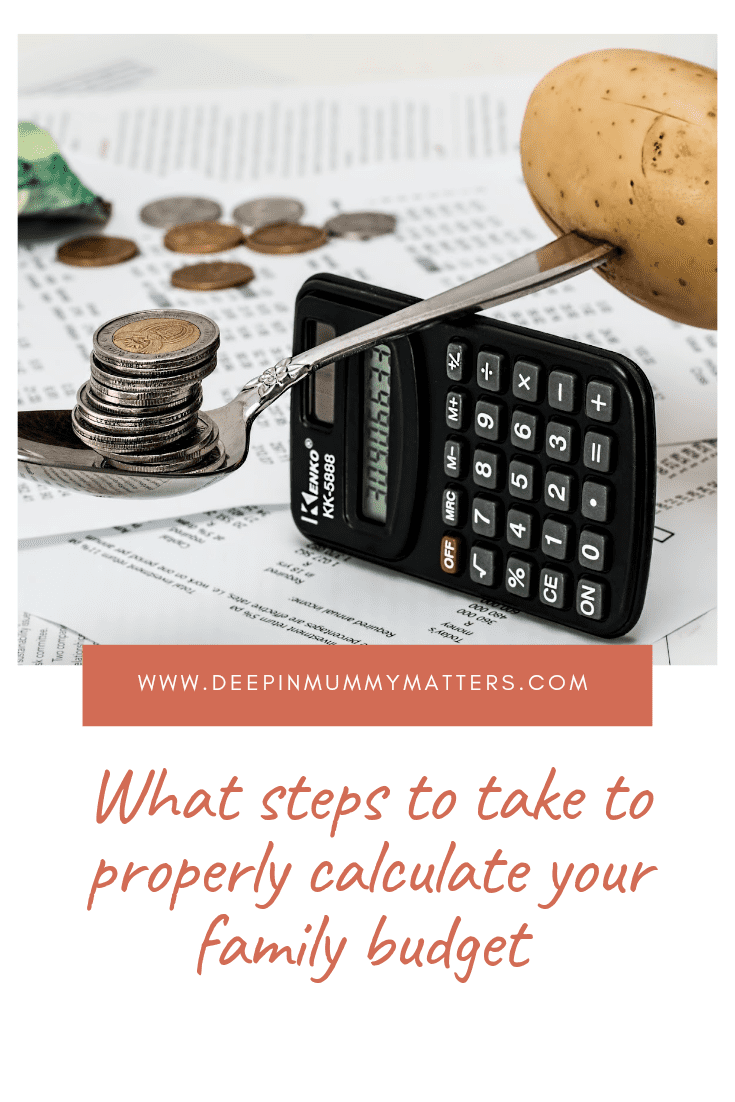It’s not always easy to know what the right steps are when it comes to calculating your family budget. The first thing you need to do is figure out where your money is going each month. That way, you can start making adjustments to have more savings or other priorities. This blog post will give you some tips on properly calculating your family budget. Without further ado, here are the steps you need to take:
Start by Tracking Your Expenses
The first step is to track your expenses. You can do this in a few different ways, but the most important thing is that you are accurate and honest with yourself. One way to do this is to list all of your spending for one month, including the mortgage payments. For instance, with this mortgage calculator, you can see your monthly mortgage repayments on different interest rates. You may also want to track spending in other areas, such as groceries, gas, and entertainment.
Another way to track expenses is by using a budgeting app or online tool. These tools often ask you to input your income and list your regular expenses. This can be a much easier way to track your expenses, but you need to ensure that the income information is accurate. You’ll also want to keep these numbers up-to-date as well. So, if something changes (like a pay raise at work or an increase in commuting costs), update this information so that it’s reflected in your budget.
Create a Budget That Works for You
Now that you have a good idea of where your money is going, it’s time to create a budget. You should tailor this budget to your specific needs and goals. For instance, if you’re trying to save for a down payment on a house, you’ll want to allocate more money towards savings than someone trying to pay off debt.
There are a few different ways to create a budget. One popular method is to use the 50-30-20 rule. This rule says that you should allocate 50% of your income towards essentials, 30% towards discretionary spending, and 20% towards savings and debt repayment. You can also use this as a starting point and then adjust the percentages based on your needs. Another way to make a budget is by listing out all of your expenses and then creating categories that reflect different areas, like savings or entertainment.
Do a Budget Analysis
Now it’s time to analyze your budget further by doing a detailed analysis of all of those monthly costs from step one. For instance, you’ll want to look at each category and analyze how it affects your monthly cash flow. If there’s a certain area taking up one-third of your income (such as housing or transportation), you can make adjustments by cutting costs in other areas (like entertainment).
This budget analysis will help you figure out where you need to make changes. So, for instance, if housing costs are a big drain on your budget and you want to buy a house in the next few years, then you’ll most likely have to cut back somewhere else (like entertainment) so that they can fit comfortably into your monthly cash flow.
Do an Annual Budget Analysis
Now it’s time to do a big-budget analysis and see how this new spending plan has affected your life. You can continue using the same process from step three, but instead of doing it monthly, you’ll want to do an annual one. This will allow you to make any major adjustments that might be necessary (such as getting another job or moving to a cheaper place) and see how they will affect your overall budget.
An annual budget analysis will guide you on whether or not your budget is working. If you’re still meeting all of your financial goals, then great! Keep the plan in place. If it’s not allowing you to meet those goals or if some major changes need to be made (such as changing jobs), then make sure that you take action accordingly to solve these problems.
Don’t Forget to Revise Your Budget
Budgets are always evolving, so you must review them regularly and make necessary changes as needed. For instance, if your priorities change or one of your goals is achieved (such as paying off debt), you may want to revise the budget accordingly. This will involve re-evaluating how you spend your money and making adjustments if necessary.
For example, say you want to pay off debt at all costs – even though the goal was achieved (by paying it off), now is a good time to revise your budget because there are probably some areas where spending has increased without realizing it (such as entertainment). So, now it may be time to cut back on discretionary spending so that the budget can go towards paying down your debt.
As you can see, several steps need to be taken to calculate your family budget properly. Without this step-by-step process, it’s easy for people to make mistakes and not realize how those small decisions affect their entire financial plan. If any of these concepts seem overwhelming or if you want someone to walk you through the whole process, don’t hesitate to reach out for help. A financial planner can be a great resource, and they’ll be able to guide you in the right direction so that your finances are taken care of.

